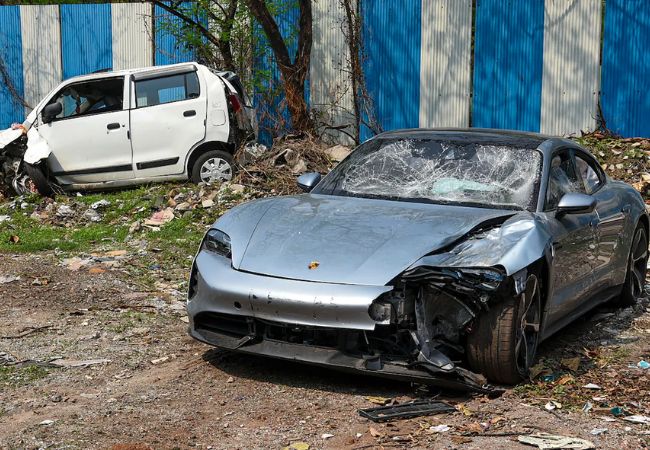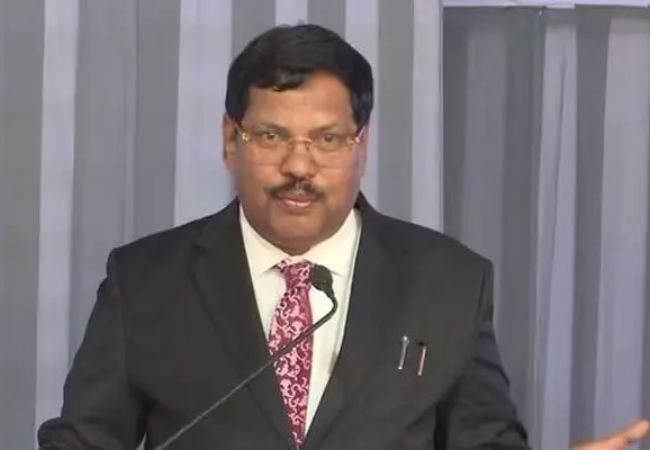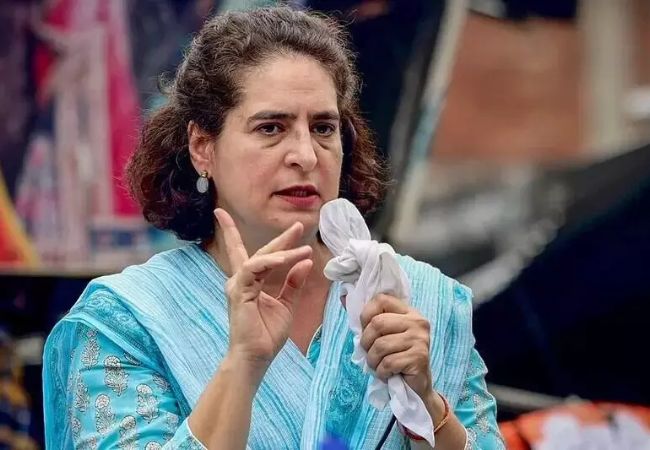New Delhi: India's sulphur dioxide (SO2) emissions, which contribute to air pollution, recorded a significant decline of approximately six per cent in 2019 as compared to 2018, the steepest dip in four years, a report has said.
However, India continues to occupy the top emitter's position for the fifth consecutive year, the report based on an analysis by Greenpeace India and the Centre for Research on Energy and Clean Air (CREA), released on Tuesday, said.
Sulphur dioxide is a poisonous air pollutant that increases the risk of stroke, heart disease, lung cancer, and premature death.
In 2019, India emitted 21 per cent of global anthropogenic (human-made) SO2 emissions, nearly double that of second-ranked global emitter, Russia.
China occupies the third position. The annual report ranks the world's biggest emitters of sulphur dioxide, the report said.
As per the report, the biggest emission hotspots in India are thermal power stations (or clusters of power stations) at Singrauli, Neyveli, Sipat, Mundra, Korba, Bonda, Tamnar, Talcher, Jharsuguda, Kutch, Surat, Chennai, Ramagundam, Chandrapur, Visakhapatnam and Koradi.
While credit needs to be given to India for making ambitious strides in renewable energy, contrarily concern arises from the consistent support given to coal-based energy generation, it said.
The report said India has been faring reasonably well in its clean energy transition and has set itself one of the world's most ambitious renewable energy targets but lack of FGD units in most power plants overshadows it.
Renewable energy capacity has been increasing in India's power sector, delivering more than two-thirds of the subcontinent's new capacity additions during the FY 2019-20.
However, these efforts are overshadowed by the fact that most of the power plants in India lack flue-gas desulfurization(FGD) units. The FGD units are critical in the process of reducing emissions, it said.
Avinash Chanchal, Climate Campaigner, Greenpeace India, said renewable energy capacity may have expanded but the air quality is far from safe.
In India, we are getting a glimpse of how reduction in coal usage can impact air quality and health. In 2019, renewable energy capacity expanded, coal dependency decreased and we saw a corresponding improvement in air quality. But our air is still far from safe.
We must speed up the energy transition away from coal and towards renewables, for our health and economy. While ensuring just transition of energy, with the help of decentralized renewable sources, we need to prioritize access to electricity for the poor, Chanchal said.
In 2015, the Ministry of Environment, Forest and Climate Change introduced SO2 emission limits for coal power stations. But power plants missed the initial deadline of December 2017 for the installation of FGD units, the report said.
Though the deadline was extended till 2022, as of June 2020 most of the power plants are operating without compliance to standards.
Five years after setting the SO2 emission limits, the Indian government has decided to shut down non-compliant thermal power stations and has also allocated Rs 4,400 crore to tackle the air pollution crisis, it said.
Sunil Dahiya, Analyst, Centre for Research on Energy and Clean Air (CREA), said, SO2 emissions are affecting the health of millions of people directly and worse through converting to PM2.5.
The most efficient and easiest way to reduce PM2.5 levels is to install FGD and reduce SO2 emissions from power plants as they form a significant fraction of total PM2.5 pollution at different locations across the country.
Every single day delay in implementation of prescribed norms and not installing the FGD system is causing huge health and economic damage to our society, it's time the offenders/non-complying power plants are pulled up for inaction and damage to the society to ensure better implementation moving ahead, he said.
It's high time that governments reduce investments in fossil fuels and shift to safer energy sources, such as wind and solar, the report said, adding that they must also strengthen emission standards and effectively implement flue gas pollution control technology on coal-fired power plants, smelters, and other major industrial SO2 emitters.
In August last year, a study by Greenpeace had claimed that India is the world's largest emitter of anthropogenic sulphur dioxide, which is produced from coal burning, and greatly contributes to air pollution.
Greenpeace India has released an analysis of a National Aeronautics and Space Administration (NASA) data, saying India has more than 15 per cent of all anthropogenic sulphur dioxide (SO2) hotspots in the world detected by the OMI (Ozone Monitoring Instrument) satellite.
Let the Truth be known. If you read VB and like VB, please be a VB Supporter and Help us deliver the Truth to one and all.
Pune (PTI): The Porsche car crash case exposed "systemic corruption," but the Pune Police have successfully uncovered the nexus behind the replacement of the accused juvenile's blood samples with those of his mother, Police Commissioner Amitesh Kumar said on Wednesday.
The case made national headlines after the high-end car allegedly driven by the 17-year-old boy in an inebriated state mowed down motorcycle-borne IT professionals Anish Awadhiya and Ashwini Costa in the Kalyani Nagar area on May 19 last year.
"Last year’s Porsche car crash case sparked widespread discussions about Pune’s deteriorating social culture, alleged police corruption, and several other issues. Amid all the criticism, one positive aspect stood out: the case exposed systemic corruption.
"It also demonstrated how the police, working within the same system, managed to uncover the entire nexus behind the replacement of the juvenile’s blood samples with those of his mother," Kumar said while addressing Nasha Mukt Bharat Abhiyan, an initiative aimed at raising awareness against drug addiction, organised at Modern College.
He added that the juvenile has been released since he was a minor.
"However, his mother has remained in jail for over a year, and his father continues to be behind bars. Doctors from Sassoon Hospital and others involved are also still in jail," Kumar said, adding that one mistake by a child, and an attempt by his parents to cover it up, destroyed an entire family.
He said the police will follow up on this case until every guilty person is punished.
Kumar also appealed to students to stay away from intoxicating substances and drugs.
"You are not only endangering your own life but also putting your entire family at risk," he said, urging the youth not to fall prey to harmful addictions.
"Instead, stand strong and act as a force to ensure that drug abuse is curbed in your surroundings. We assure you of full police support," he added.
He further stated that if youth from all colleges unite and decide to end this menace, "the day is not far when not even one gram of drug will be sold in the city".
The investigation into the car crash had revealed that the juvenile's blood samples were replaced with those of his mother.
The roles of Dr Ajay Taware, head of the forensic department, Medical Officer Shreehari Halnor, and a hospital staffer came under scrutiny.
While the mother is currently out on bail, the juvenile’s father, Sassoon Hospital doctors Taware and Halnor, staffer Atul Ghatkamble, two middlemen, Ashpak Makandar and Amar Gaikwad, and others remain in jail for the alleged blood sample swap.





